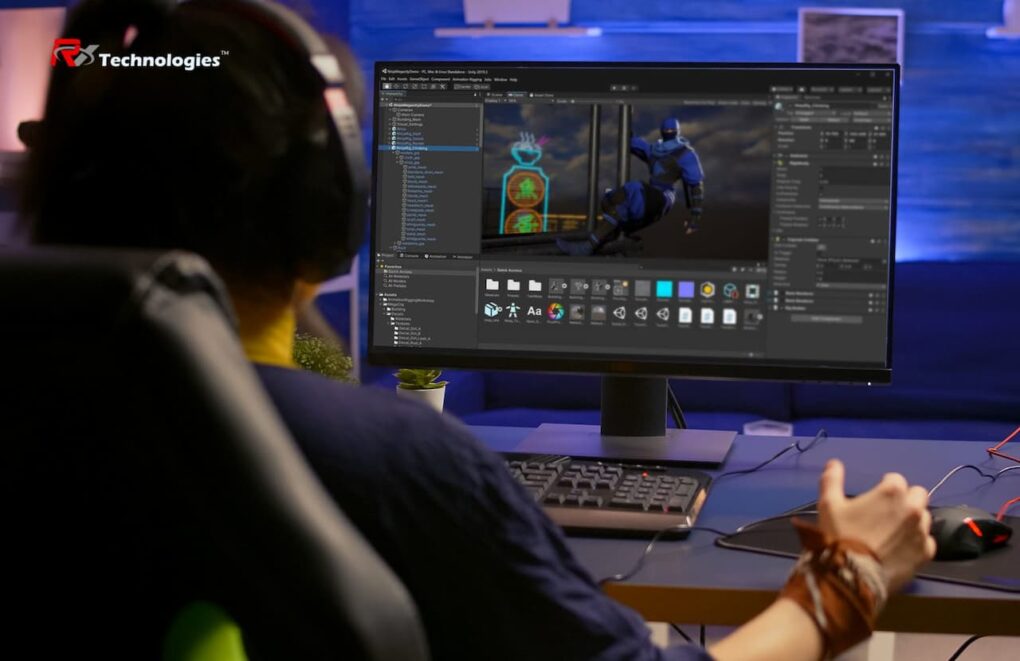Exactly how much do you love playing video games?
How much time and effort have you put into these games that reward you with so much happiness and excitement?
Well, the games that exhilate us so much are no walk in the park to create. Developing legendary games is an art and skill of its own. If you’re a gamer, there must have been some point in their life where you considered going into Game Development. If you ended up dropping the idea, here’s a quick and simple outline of what Game Development is like!
From the surface, Video Game Development is simply the process of developing a video game. But underneath the surface, there are so many different aspects working together in perfect unison to make a functional game. The ever challenging efforts required to pull this off is undertaken by a Game Developer, ranging from one enthusiastic individual with his/her PC to an international team spanning the entire globe. One can start at rock bottom and still reach the epitome of gaming, because extremely high–end games don’t necessarily mean success.
Game Development is typically funded by a specific Publisher, and depending on the scale can take upto years for final completion. As for Indie games, they take up less time and resources as they are being produced by individuals and smaller developers. Overall, the Gaming industry is booming now, thanks to the rise of accessible game development software like the infamous Unity platform and Unreal Engine. Online gaming is the forerunner in the present age, facilitated by efficient distribution systems Steam, Epic Games, Blizzard and Uplay. Thanks to everyone’s busier lifestyles now, Mobile gaming is also showing incremental trends on both Android and iOS platforms.

The Phases
Game Development takes place in an organized system of phases. Let’s consider a typical Mainstream PC game developed for commercial purposes, the phases are as follows;
- Pre-production – Planning phase of the project focusing on idea and concept development as well as production of initial design documents.
- Pitches – A short summary document used to present the game’s selling points and detail its profitability.
- Prototypes – Building prototypes of gameplay ideas and features. This allows the programmers and designers to experiment with different algorithms and usability scenarios for the game.
- Writing of Game design documents
- Idea approval
- Funding for Game Developer
- Full-scale development

The Big Brains
A proficient team of 20-100 individuals band together and split responsibilities to make a fully functional game. To each their own, each person has an area or areas of expertise and focus their full efforts there. Below are the biggest roles;
- Producer – They manage the development team, schedules, reports progress, hires, assigns staff, oversees developer progress and budget. Responsibilities include PR, contract negotiation, liaising between the staff and stakeholders, schedule and budget maintenance, quality assurance, beta test management and localization.
- Publisher – The company that publishes the video game which they’ve developed internally or was developed externally. Responsibilities include product manufacturing, marketing, market research and advertising.
- Development team – Division of subtasks of Game Development. Mainly consists of;
- Designer – Designs the gameplay, conceives and designs the rules and structure of the game. As the main Game visionary, they act as writers and formulate the game’s narrative, dialogues, commentary, cutscene narratives, journals, video game packaging content, hint system and so on.
- Artist – The Visual artistic geniuses who creates the game’s art. The art director must manage, coordinate and schedule the art team.
- Programmer – The software engineer who develops the game and any related software. The game’s codebase development is handled by them.
- Level designer – The person who creates the levels, challenges and/or missions for players using a very specific set of programs.
- Sound engineer – Technical pros responsible for great sound effects and sound positioning.
- Tester – Their job is quality assurance. Testers play and analyze games to document any and all software defects as a part of the quality control process.

As you can see above, Game Development is no easy process. Using the software development process, the games that you know and love are developed as creative outlets and serve to generate profits for many organizations. This sacred process can be considered as one of the best examples of where Art meets Science. But like most things, money is essential to get a game rolling and this is exactly why proper planning and backups must be in place.
Once a Game takes flight, the revenue is divided among all the parties along the distribution chain, including the developer, publisher, retail, manufacturer and console royalty. Unfortunately, most games end up flopping, making the developers go bankrupt (yes, we are a tough crowd to please). Don’t let this discourage you though, because there are more than enough Games that become massive hits and leave the Developers rolling in the dough. Do your research, plan properly, obtain relevant backing, get the right help, secure the funding, play smart and understand the Gaming community to increase your odds.
We hope this article helped you get a better idea about Game Development. Whether you’re an aspiring Developer or interested Gamer, remember to appreciate the effort and resources put into all the games that we play~
